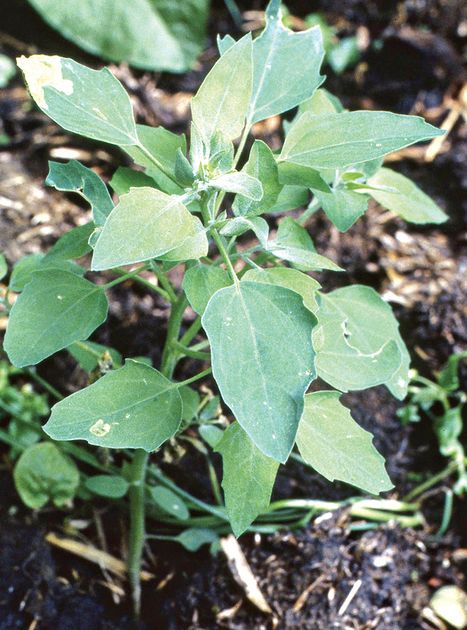🌷 Spring savings – save 25% on ckbk Premium Membership with code SPRING25
Fat Hen
Published 1986
Chenopodium album An annual herb very common throughout the British Isles, it occurs in waste places and cultivated land, especially around farmyards. It flowers from June to October.

Fat Hen
The generic name for fat hen is taken from the Greek chen, a goose, and pous, a foot, an allusion to the resemblance of the leaves to the webbed feet of the goose. In Germany the plant is said to have been used for fattening poultry and was known as ‘Fette Henne’.
Fat hen has been eaten by man since at least AD 300 having been found in the stomach of the Grauballe Man excavated from the peat bogs of Denmark. It was cultivated as a vegetable all over eastern Europe and in Russia; it is said that during times of scarcity, Napoleon lived on the black bread made from its seeds. It was eaten in the Scottish islands until recent times and in Europe in the last war when the food shortage was acute. The young leaves were eaten as greens or boiled with fat by many tribes of the American Indians, who also ground the seeds into meal to bake as bread, cakes or gruel. Close relatives of C. album have been developed into cultivated plants in the American highlands. Two of these crops, quinoa and canahua, are sources of grain, while the third, huauzoutte, is eaten as a vegetable, usually fried in batter.
Become a Premium Member to access this page
Unlimited, ad-free access to hundreds of the world’s best cookbooks
Over 150,000 recipes with thousands more added every month
Recommended by leading chefs and food writers
Powerful search filters to match your tastes
Create collections and add reviews or private notes to any recipe
Swipe to browse each cookbook from cover-to-cover
Manage your subscription via the My Membership page
Part of
Advertisement
Related Recipes
-
-
-
-
Related Reference
-
-
-
-
Advertisement



